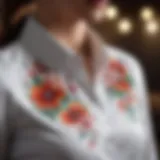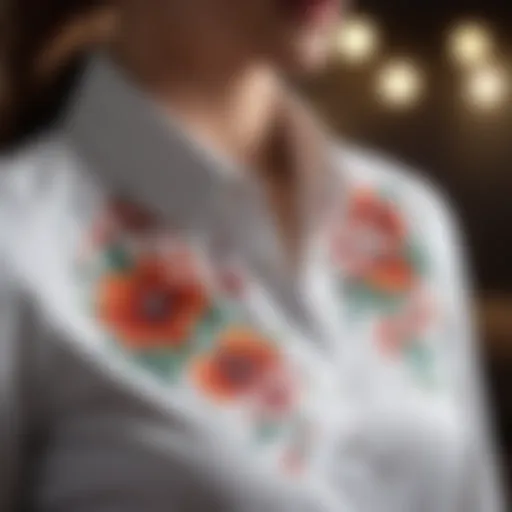Unexpected Wedding Dresses: A Comprehensive Exploration
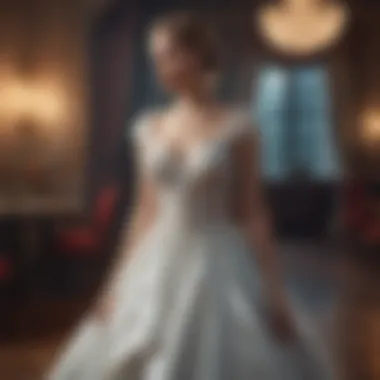

Intro
The concept of a wedding dress has undergone significant transformation in recent years. Gone are the days when a traditional white gown was the only acceptable choice. Today, brides are embracing a diverse array of styles, colors, and designs that speak to their personal tastes and narratives.
This shift in bridal fashion reflects broader cultural changes and the desire for individuality on a significant occasion. Within this article, we will explore unexpected wedding dresses, which defy conventional norms and invite a wide range of interpretations. Unique choices not only provide an opportunity for self-expression but also challenge the long-standing traditions associated with wedding attire.
In the following sections, we will identify key fashion trends, delve into tips for enhancing beauty looks, examine celebrity influences, and highlight relevant industry news. Each segment will provide insights that inspire brides to think outside the box while selecting their wedding attire.
Fashion Trends and Must-Have Pieces
Emerging Unconventional Designs
Brides are increasingly looking for designs that stray from the traditional. Whether it be bold colors like deep red or striking patterns, unexpected wedding dresses are on the rise. Unique silhouettes, such as asymmetrical hemlines or structured bodices, make a strong statement. Materials like velvet or lace can be used beyond the expected, offering brides creative freedom in their choices.
Runway Reports
Recent fashion shows have showcased a number of designers stepping outside the conventional bridal box. For instance, Vera Wang has introduced black wedding dresses alongside classic silhouettes. Meanwhile, designer Hayley Paige emphasizes playful textures and layers. These runway reports signal an industry leaning toward innovation, pushing future brides to consider styles that speak to their personality.
Street Style Features
Street style continues to influence bridal fashion significantly. Many brides are turning to everyday wear influences, integrating high-low styles. Casual elements, such as denim jackets over lace gowns or bridal sneakers, present a blend of elegance and comfort. These choices reflect a more personal and relaxed approach to wedding attire.
Seasonal Must-Haves
Certain styles emerge as seasonal trends. For example, spring may bring floral detailing while winter favors heavier fabrics and layered looks. Fall often leans towards rich tones and velvets, presenting brides with opportunities to choose outfits that complement the season’s aesthetic.
Beauty Tips and Tricks
Choosing an unexpected wedding dress also necessitates thoughtful beauty choices. Understanding how to enhance one’s look while aligning with the chosen attire can create a stunning overall aesthetic.
Skincare Routines
Preparing your skin is fundamental. A consistent skincare routine leading up to the wedding is essential for achieving that glow. Focus on hydration and gentleness to avoid irritation. Make sure to test products in advance to identify any potential reactions.
Makeup Tutorials
For brides considering bold or unconventional dresses, makeup must be complementary. Tutorials emphasizing natural looks can balance an eye-catching gown. Conversely, if the dress is simple, bolder makeup can make an impact. A skilled makeup artist can help bridge these elements, ensuring harmony.
Haircare Tips
Experimenting with hairstyles can accentuate an unconventional dress. Whether opting for an updo or flowing locks, ensuring hair is healthy is crucial. Consider scheduling treatments or trying out wigs and hairpieces that enhance the overall look without overshadowing it.
Celebrity Style and Red Carpet Looks
Celebrity weddings often influence trends and choices for everyday brides. Observing how famous figures approach their wedding attire can provide inspiration and guidance for unique styles.
Celebrity Fashion Spotlights
Stars like Ciara and Sophie Turner have chosen unexpected styles for their nuptials, embracing colors and cuts that challenge traditional norms. Analyzing these choices reveals how personal narratives can shape bridal fashion.
Red Carpet Event Coverage
Red carpet events highlight stunning designs that can reshape bridal aesthetics. Observing dresses worn for these occasions can inspire brides to consider non-traditional elements. Standout pieces often emphasize originality, blending high fashion with approachability in a wedding context.
Style Breakdowns
Detailing a celebrity's look serves as an educational tool. Analyzing the elements—designer, color palette, and accessorizing—can help brides curate their personal style. Many bridal consultants adopt these practices in their work, guiding brides through the myriad of possibilities available today.
Fashion Industry News and Events
Staying updated with industry events helps brides navigate the evolving landscape of wedding fashion. Understanding new trends or launches can increase awareness of upcoming styles that suit individual tastes.
Fashion Week Updates
Events like Bridal Fashion Week unveil the latest design ideas. These showcases allow designers to exhibit their unique visions, providing brides with insight into future trends. Watching these introductions can contribute to a well-informed selection process.
Product Launches
New collections from reputable designers are critical for brides looking to spot an unexpected dress. Brands often launch exclusive lines that cater to modern sensibilities, ensuring that each design remains in tune with contemporary tastes.
Industry Insider Insights
Following the thoughts of industry insiders provides context for changing trends. Engaging with fashion commentary through blogs or social media highlights can be enlightening. This knowledge empowers brides to make informed decisions and recognize emerging shifts in bridal fashion.
The Concept of Unexpected Wedding Dresses
The notion of unexpected wedding dresses encompasses more than just unique designs or bold colors. It represents a substantial shift in how brides view their choice of attire, moving beyond the constraints of tradition. In today’s world, where personalization and individual expression are paramount, this concept offers a deeper understanding of bridal identity. The exploration of unexpected wedding dresses highlights the important facets of self-expression, creativity, and cultural influence that permeate contemporary bridal fashion.
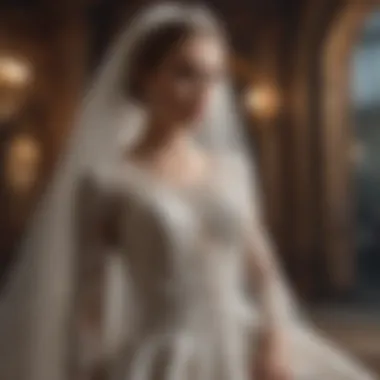

By stepping away from the conventional white gown, brides embrace opportunities to reflect their distinct personalities and life experiences. This exploration reveals how unexpected choices convey messages about the evolving perceptions of love, commitment, and personal style. Additionally, as societal norms shift, it is essential to recognize the benefits that come from making unconventional choices.
Brides today enjoy flexibility. They can choose colors, fabrics, and cuts that align with their preferences, rather than adhering to historical cues. The significance is noteworthy; as wedding attire becomes more diverse, it enriches the overall narrative of weddings as a celebration of individuality.
Benefits of Embracing the Unexpected:
- Encourages self-expression
- Breaks stereotypes around wedding fashion
- Enhances personal connection to the dress
- Promotes a diverse celebration of love
"The wedding dress is not just a symbol of a wedding, but an emblem of who you are as a person."
In summary, the concept of unexpected wedding dresses allows for a dialogue surrounding modern romance and individuality. It challenges assumptions, encourages exploration, and ultimately serves as a vehicle for brides to express themselves authentically.
Defining 'Unexpected' in Bridal Fashion
Defining what is considered 'unexpected' in bridal fashion requires a deeper examination of both societal norms and personal tastes. Unexpected indicates a break from established conventions. This often involves colors outside of the traditional white, unique fabrics, or designs that significantly depart from expected silhouettes.
What makes a wedding dress unexpected can vary widely from one culture to another and between individuals. A bright red gown may be seen as refreshing and bold in some contexts, while others might find it controversial. It is this subjectivity that makes the concept intriguing.
Several factors contribute to the unexpected nature of these dresses, including:
- Use of distinctive materials like leather or denim
- Bold color choices such as deep blues, greens, or even pastels
- Non-traditional cuts that emphasize comfort over structure
Brides find empowerment in making choices that resonate with their journey, transforming the concept of the wedding dress from a mere garment into a narrative piece that tells their personal story.
The Shift in Traditional Norms
The landscape of wedding fashion has undergone a significant transformation, redefining what it means to adhere to traditional norms. Once, the wedding dress was synonymous with a white, flowing gown; however, societal evolution has facilitated a broadening of these parameters.
In recent years, there has been a noticeable shift in attitudes regarding what is deemed acceptable and desirable for brides. Couples increasingly prioritize authenticity over tradition, leading many brides to seek dresses that mirror their lifestyles and values. This movement reflects a broader cultural trend towards inclusivity and diversity in all areas of life, including weddings.
Key aspects of this shift include:
- Increased visibility of non-white dresses in media and pop culture.
- Greater acceptance of diverse body types, leading to a range of styles being showcased.
- An understanding that weddings can be personalized events, making a dress that feels "right" more valuable than following old rules.
Consequently, brides now enjoy a range of choices that challenge formerly held beliefs. This shift prompts a deeper reflection on the significance of attire in expressing identity while celebrating love.
Historical Context of Bridal Attire
Understanding the historical context of bridal attire provides crucial insight into the evolution of unexpected wedding dresses. This background enables brides to appreciate the foundation on which modern choices are built. Each era's fashion illustrates societal norms, values, and expectations surrounding marriage and femininity.
The historical journey reveals how wedding dresses have changed over time. For instance, the significance of color, silhouette, and fabric demonstrates cultural shifts. By recognizing these influences, brides can make informed decisions that resonate with their personal style while respecting the wedding tradition.
In addition, analyzing historical bridal fashion raises awareness of the factors influencing current trends. Different decades introduced unique styles, making it essential to understand the evolution of wedding dresses when considering unconventional designs.
Evolution of Wedding Dresses Through Decades
The evolution of wedding dresses can be mapped through various decades, each contributing distinctive characteristics to bridal fashion.
In the Victorian era, the color white gained popularity, signifying purity and innocence. Queen Victoria's choice of a white gown in 1840 shaped the standard for modern wedding dress colors. This period valued opulence, with intricate lace and elaborate embroidery adorning garments.
The 1920s brought a shift towards shorter hemlines and a more relaxed fit, reflecting the growing independence of women. Flapper-style wedding dresses often utilized lighter fabrics like chiffon, incorporating beading to enhance elegance.
By the 1960s, fashion took another turn, featuring youthful silhouettes and bold colors. Wedding dresses of this era often incorporated elements that catered to personal taste rather than strict tradition. The 1980s introduced dramatic styles, characterized by puffed sleeves and long trains, as well as use of synthetic materials.
Currently, the 21st century is marked by a broader acceptance of various styles. Brides are seeking dresses that represent their individuality, resulting in vibrant colors, avant-garde designs, and a mix of different fabrics. This divergence from traditional designs illustrates how personal expression has taken precedence in recent years.
Influential Moments in Bridal Fashion History
There have been numerous influential moments that significantly shaped bridal fashion. These pivotal events drove changes in styles, patterns, and societal expectations. Here are some key moments:
- Queen Victoria's White Dress (1840): Marked the beginning of white wedding gowns as standard attire.
- The Great Depression (1930s): Shifted fashion towards practicality. Simpler cuts and less costly fabrics became more prominent.
- Hollywood Glamour (1950s): Influential figures like Grace Kelly popularized the lace wedding gown, combining elegance with classic beauty.
- The Rise of Celebrity Weddings (1990s onward): High-profile weddings have inspired many brides to emulate the styles of celebrities, impacting trends significantly.
These critical moments provide context for current bridal fashion while demonstrating how unexpected wedding dress styles have emerged from these historical influences. Brides today can take inspiration from the past to create their unique narratives in bridal attire, fostering a connection between historical significance and contemporary choices.
Current Trends in Unexpected Wedding Dresses
The realm of bridal fashion has witnessed significant transformations, particularly in the area of unexpected wedding dresses. These dresses often challenge traditional expectations, offering brides new avenues for self-expression. Observing current trends provides insight into not only what is fashionable but also what resonates with modern couples. Understanding these trends enables brides to select dresses that reflect their unique personalities while still fitting within the broader context of wedding culture.
Color Choices Beyond White
Traditionally, white dominated the wedding dress palette. However, contemporary brides are increasingly opting for colors that assert individuality. Shades such as blush, champagne, navy, and even black are becoming prevalent. These choices allow for a more personal connection to the dress.
- Emotional Significance: Choosing a color can signify personal stories or cultural backgrounds.
- Visual Impact: Colored dresses stand out in wedding photographs, creating memorable visuals.
- Fashion Alignment: Many runways have embraced colorful gowns, indicating a shift in bridal fashion norms.
This trend underscores the desire for authenticity. By choosing colors beyond white, brides can tell their stories visually, making their wedding attire a true reflection of themselves.
Unconventional Fabrics and Textures
The fabric of a wedding dress contributes significantly to its overall aesthetic and impact. Brides are moving away from traditional materials like satin and lace, experimenting instead with unconventional options. Fabrics such as tulle, chiffon, and even leather have found their place in bridal designs.
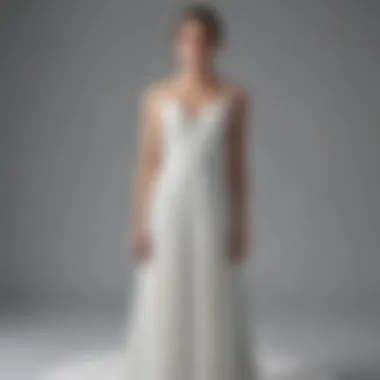

- Draping Techniques: Incorporating different textures can elevate a gown’s design, offering an unexpected twist.
- Layering Elements: Mixing textiles can create depth, making a dress visually captivating.
- Sustainable Choices: Some unconventional materials promote sustainability. Brides are more aware of the environmental impact of their choices.
By embracing diverse fabrics, modern brides can embody the unexpected, challenging the status quo of wedding attire.
Innovative Silhouettes and Cuts
Bridal gowns are breaking free from traditional silhouettes like the A-line and ball gown. Current trends highlight innovative approaches to wedding dress designs, focusing on unique cuts and structures.
- Asymmetric Lines: Gowns featuring uneven hems or necklines offer a modern take on classic shapes.
- Culotte-style Designs: These provide comfort without sacrificing style, ideal for outdoor or less formal weddings.
- Jumpsuits: A growing trend is the bridal jumpsuit. This alternative combines ease of movement with style, appealing to the modern bride.
As these innovative silhouettes gain popularity, they reflect an evolution in the perception of bridal wear. Brides can now find options that not only cater to personal tastes but also enhance comfort and functionality on their special day.
The shift towards unexpected elements in wedding dresses represents a broader cultural change, highlighting the need for personalization in a world filled with norms.
Adopting these trends allows brides to confidently select dresses that resonate with their identity, reflecting the modern marriage narrative.
Cultural Perspectives on Wedding Dresses
Understanding cultural perspectives on wedding dresses is essential in the exploration of unexpected bridal attire. Wedding dresses are much more than just fabric and design; they embody traditions and beliefs unique to each culture. As a result, examining these variations shows how unexpected choices are often rooted in deeper social contexts. This section will look at how cultural influences shape wedding attire and provide insight into why brides might choose to diverge from conventional styles.
Cultural Variations in Bridal Attire
Bridal attire differs significantly around the world. Each culture has its own customs that dictate what is considered appropriate or traditional for wedding dress. In some cultures, red is the preferred color for wedding dresses, such as in China and India, where it symbolizes joy and prosperity. Other cultures lean towards white, traditionally seen in Western weddings as a representation of purity.
However, the rise of globalization and the internet allows couples to blend styles from various cultures. This can lead to fascinating combinations that surprise even the most seasoned observers. For example, a bride might wear a traditional Chinese dress during the ceremony and change into a Western-style gown for the reception. This blending showcases how personal taste and cultural heritage can coalesce into something unexpected.
Additionally, many brides now incorporate elements from their own cultural backgrounds into their dresses, such as fabrics, embellishments, or specific cuts. This practice not only honors their heritage but also allows them to infuse their personal narrative into their wedding attire.
Global Trends Influencing Bridal Choices
Global trends significantly impact how brides choose their wedding attire. The influence of social media cannot be overlooked, as platforms like Instagram and Pinterest expose brides to diverse styles and designs from across the globe. Popular culture, too, plays a part. Celebrities often inspire trends by wearing unconventional wedding dresses, leading brides to seek similar styles.
Moreover, sustainability has become a growing concern among many brides. Ethical fashion choices mean that more couples are looking for dresses that reflect their values, rather than just following traditional expectations. As a result, many opt for vintage, thrifted, or made-to-order dresses instead of mass-produced options. This shift encourages designs that are not just eye-catching but also meaningful and individualistic.
Here are some notable global trends:
- Diversity in Dress Colors: Increasingly, colors like pastels, blacks, or even bold hues are becoming popular, moving beyond classic white.
- Incorporation of Cultural Elements: Brides are using textiles or patterns relevant to their heritage, which adds a unique personal touch.
- Sustainable Fashion Choices: More brides are opting for eco-friendly dresses, which represents their concern for the environment.
"Fashion is not just a show. It's about history and culture reflected through personal choices."
In summary, cultural variations and global trends play crucial roles in shaping the world of unexpected wedding dresses. Understanding how these elements interconnect helps in appreciating the evolving landscape of bridal fashion, as more brides choose to express their individuality through their wedding attire.
Psychological Implications of Wedding Dress Choices
When it comes to wedding dresses, the decision-making process is often laden with personal significance. Choosing an unexpected dress reflects deeper layers of psychological implications. For many brides, it represents a break from convention and a chance to embrace individuality. The act of wearing an unconventional dress can serve as a powerful statement about identity, self-esteem, and autonomy. This section explores how these elements intertwine in the realm of bridal fashion.
Self-Expression Through Fashion
Fashion serves as a medium of self-expression, and wedding dresses are no exception. Brides increasingly desire to convey their personal style and narrative through their choice of attire. For example, a bride who opts for a colorful or asymmetrical design is often expressing her uniqueness and personal journey. This choice can empower her, fostering a sense of confidence on one of the most significant days of her life.
Furthermore, unexpected wedding dresses can help brides connect with their values or experiences. Wearing a non-traditional garment may signify personal stories, cultural heritage, or even feminist ideals. Inherent within this choice is the rejection of societal pressures, allowing each bride to craft a narrative that is authentically her own.
Breaking Free from Expectations
The societal expectations surrounding wedding dresses have traditionally revolved around specific norms, primarily the notion of white ball gowns. However, many brides now seek to break free from these confines. This desire often stems from a recognition that these norms do not reflect their true selves or their vision for their wedding day.
By choosing unexpected designs, brides challenge the status quo. They can redefine what it means to be a bride. Such decisions can also lead to a broader acceptance of diverse styles within the culture at large. This shift not only benefits the individual bride but can also inspire others to explore and embrace their own unique fashion choices.
"The choice of an unexpected wedding dress can be a liberating experience for many brides, symbolizing autonomy and individuality in a traditionally prescriptive space."
Embracing the unexpected is more than just a fashion statement; it is about reclaiming narratives. The psychological implications extend beyond the dress itself. They resonate with the bride's own journey of self-acceptance and personal empowerment. By wearing what truly resonates with them, brides feel more in control and aligned with their authentic selves.
Practical Considerations for Choosing an Unexpected Dress
Choosing an unexpected wedding dress goes beyond just making a bold statement. It entails a careful consideration of various practical elements that can affect the overall experience of the wedding day. Brides should weigh aspects such as budgeting, designer selection, and personal expression when contemplating unique designs. Doing so can enhance the personal significance of their attire and align it with their style and values.
Budgeting for Unique Designs
Budgeting plays a crucial role in selecting an unexpected wedding dress. Unique designs often come with distinct price points, sometimes reflecting the creativity and labor involved. The importance of setting a clear budget cannot be overstated. This provides a framework to avoid overspending while still allowing for the possibility of splurging on exceptional pieces.
Here are some considerations for budgeting:
- Research Costs: Investigate typical prices for unexpected designs within the market. Knowing baseline figures helps in realistic planning.
- Include Alterations: Unique dresses may require customization or alterations, which add to the overall cost. Factor this into your budget upfront.
- Explore Options: Consider a range of avenues. Look for designers that offer bespoke services but also keep an eye out for high-quality pre-owned options.
- Factor in Accessories: Plan your budget to also cover shoes, jewelry, and other elements that complement the dress. An unexpected wedding dress may shift the focus on additional styling choices.
- Set Priorities: Determine if the dress is the main splurge or part of a larger wedding budget. This can help refocus efforts on the most fulfilling aspects.
"A well-thought-out budget is not just a number; it’s a guide to making informed choices that reflect your style and story."
Finding the Right Designer or Boutique
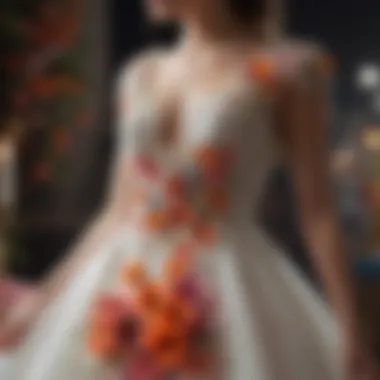

The next step involves finding the right designer or boutique that aligns with your vision. This choice has significant implications for the overall satisfaction with your wedding dress. The designer should resonate with the style you envision, whether that's avant-garde, vintage-inspired, or something completely unique.
When searching for the right designer or boutique, keep these tips in mind:
- Research Collections: Investigate various designers that specialize in unconventional bridal designs. Check their portfolios to find works that truly resonate with your vision.
- Read Reviews: Look for feedback from previous customers. Reviews can provide insights into the reliability and quality of service offered by the designer.
- Visit Boutiques: If possible, visit local boutiques. This helps in understanding the fabrics, cuts, and overall feel of designs in person.
- Communicate Vision: Clearly express your ideas and preferences to the designer or retailer. A good relationship can lead to fruitful collaborations and beautiful customization.
- Trust Your Instincts: Ultimately, choose a designer or boutique that feels right. Your intuition can often guide you to a choice that reflects your uniqueness.
By focusing on these practical considerations, brides can navigate the world of unexpected wedding dresses with confidence, ensuring their choices not only exhibit personal style but also practical sensibility.
Case Studies of Notable Unexpected Wedding Dresses
The exploration of unexpected wedding dresses reveals much more than just a collection of distinct designs. It opens a dialogue about the broader implications of personal choice in bridal fashion today. This section highlights two critical aspects: celebrity weddings and personal stories from brides. These case studies exemplify how unexpected choices can shape and challenge existing norms and expectations surrounding bridal attire. In examining these stories, we show the deep connections between fashion choices and identity, as well as the societal influences that drive these decisions.
Celebrity Weddings and Their Choices
Celebrity weddings often set trends that ripple through the fashion world and influence countless brides. When high-profile figures choose non-traditional wedding dresses, it creates a dynamic shift in public perception of bridal attire. For example, when singer Solange Knowles married Alan Ferguson in a stunning jumpsuit designed by Stéphane Rolland, it sparked conversations about alternatives to the conventional wedding gown. Many applauded her decision, viewing it as an embrace of individuality over tradition.
Similarly, actress Sofia Vergara wore a fitted, off-white wedding gown by Zuhair Murad that blended classic elegance with modern flair. These choices underscore the significant role celebrities play in paving the way for others to consider unexpected options. The psychological impact cannot be understated; seeing admired public figures embrace unique styles can empower everyday brides to make bold decisions.
Key Benefits of Celebrity Influence on Bridal Fashion:
- Validation of Non-Traditional Choices: Celebrities bring legitimacy to unexpected styles, encouraging brides to veer away from traditions.
- Inspiration for Unique Designs: Unique celebrity weddings inspire designers to create more diverse options, reflecting a broader spectrum of tastes.
- Media and Social Media Exposure: High visibility in media saturates public consciousness, making unconventional looks more accepted.
Real Stories from Brides
The perspective of real brides offers an authentic insight into the world of unexpected wedding dresses. Many brides recount how their choices reflect personal stories, cultural heritages, or simply a desire to stand out. Some have shared experiences of rejecting traditional styles for garments that genuinely resonate with their identities.
For instance, one bride named Lila opted for a bold red wedding dress instead of the classic white attire. Her choice stemmed from her cultural background and a desire to honor her family traditions, which often featured vibrant colors. Another bride, Jenna, chose to wear a vintage tea-length dress, prioritizing comfort and personal style over conventionality.
These narratives highlight how unexpected wedding dresses can be more about personal expression than merely a fashion statement. Each dress tells a story, aligning the bride's unique identity with her special day. Collectively, these stories challenge the notion of what a wedding dress should be, pushing boundaries and expanding possibilities.
"I wanted my dress to be a reflection of who I am, not just a symbol of tradition." – Jenna, a recent bride
Importance of Encouraging Diverse Stories:
- Fostering Authenticity: Real stories inspire brides to embrace their uniqueness, creating a more inclusive view of bridal fashion.
- Broadening Acceptable Aesthetics: Diverse choices highlight the wide spectrum of styles available, promoting broader acceptance.
- Strengthening Community Connections: Sharing personal stories builds a community among brides seeking validation in their choices.
In summary, the case studies of notable unexpected wedding dresses, encompassing both celebrity choices and real-life experiences, serve as a mirror reflecting changes in cultural dynamics surrounding bridal fashion. This section underlines the significance of embracing non-traditional options and the profound impact they can have on personal expression and identity.
The Impact of Social Media on Bridal Fashion
Social media has radically transformed the landscape of bridal fashion, especially regarding unexpected wedding dresses. It creates vast platforms for individuals to share experiences and ideas, promoting uniqueness and creativity among brides. Through social media, brides can find inspiration from a range of sources that break traditional norms and explore unconventional styles. This movement toward unexpected choices has gained momentum in recent years, leading to a diversification of what bridal attire can look like. The influence of social media is a considerable factor, shaping not only personal preferences but also industry trends and standards.
Influencers and Their Role in Shaping Trends
Influencers have become powerful figures in the wedding fashion industry. Their capacity to reach large audiences allows them to showcase unexpected wedding dresses in various formats, creating engagement and dialogue around lesser-known designs. Some influencers have authenticity and relatability, encouraging their followers to be daring and choose attire that match their personal style rather than prevailing trends.
The collaboration of influencers with bridal boutiques and designers promotes unique wedding dress options. They feature distinctive designs that stand out and inspire brides to think outside the box.
Known figures in the fashion world, like Chiara Ferragni or Aimee Song, utilize their platforms to highlight styles that resonate with modern brides. Through social media campaigns and taglines, these influencers normalize the idea of wearing non-traditional garments on one of the most significant days of a person's life.
User-Generated Content and Its Influence
User-generated content is another important aspect of social media's impact on bridal fashion. Brides share their wedding photos, showcasing their unexpected dresses, creating a rich tapestry of individual expressions. This content empowers others to see real people wearing innovative designs and helps challenge outdated perceptions of wedding attire.
By observing real weddings and how brides curate their styles, potential brides gain confidence in their choices. They can draw inspiration from authentic experiences rather than polished editorials. This approach fosters a community where uniqueness is celebrated, and reaffirms that unconventional choices are not merely trends but statements of individuality.
Furthermore, platforms like Instagram and Pinterest serve as visual libraries for brides-to-be. They can search for specific styles, fabrics, and colors that resonate with their envisioned wedding. The discussions sparked in comments and shares create a sense of belonging and support among brides considering unexpected wedding dresses.
"The sheer influence of social media cannot be overstated. It opens a dialogue around bridal fashion that enables new perspectives and self-expression."
Future of Wedding Fashion
The subject of future wedding fashion is crucial in understanding how today’s cultural shifts will reshape bridal aesthetics. The exploration of this topic allows us to apprehend the inevitable evolution that will influence what future brides choose to wear on their special day. This section will underscore elements like innovation, personalization, and the impact of societal changes on bridal trends.
With an increasing number of couples seeking to express their identities jointly, we can expect wedding dresses to reflect more diverse styles. Modern brides are moving away from traditional white gowns. Instead, they are opting for unexpected designs that emphasize individuality. This leads to exciting developments in the bridal market and provides more options for discerning consumers.
Additionally, the rising awareness around sustainability and ethical fashion raises important considerations for future trends. As brides become more conscious of their choices, the wedding industry must adapt by offering sustainable options. These shifts are important for both environmental impact and for aligning with consumers' values.
"Fashion is the armor to survive the reality of everyday life." – Bill Cunningham
Predictions for Emerging Trends
As we look ahead, several trends are poised to emerge in the realm of wedding fashion. Some areas of focus include:
- Inclusive Sizing: Expect more designers to cater to varying body types, ensuring all brides feel represented.
- Bold Color Palettes: Shades like deep burgundy, royal blue, or even vibrant hues are likely to replace traditional whites.
- Mix and Match Styles: The idea of blending different styles into one outfit is likely to gain popularity, providing brides a way to showcase their personal tastes.
- Tech Integration: Wearable technology in dresses, such as smart fabrics that change color or texture, will likely intrigue tech-savvy brides.
These predictions underscore a shift toward creativity and customizability, where unique designs become the norm rather than the exception.
Sustainability and Ethical Considerations
Sustainability is becoming an essential consideration in the future of wedding fashion. As climate consciousness grows, more brides will seek eco-friendly materials and ethical production practices. This movement reflects broader global trends in reducing waste and conserving resources.
- Eco-friendly Fabrics: Materials like organic cotton, recycled polyester, and even luxurious substitutes made from natural fibers will become common.
- Local Production: Brides are likely to favor dresses made by local artisans to reduce their carbon footprint.
- Rental and Second-hand Options: The rental market is expected to flourish, allowing brides to wear stunning designs without the full environmental impact of purchase.
These elements provide brides with alternatives that contribute positively to the planet while still making a profound style statement on their wedding day.
In this evolving landscape, the future of wedding fashion is not just about what is stylish, but also about making informed and thoughtful choices.
